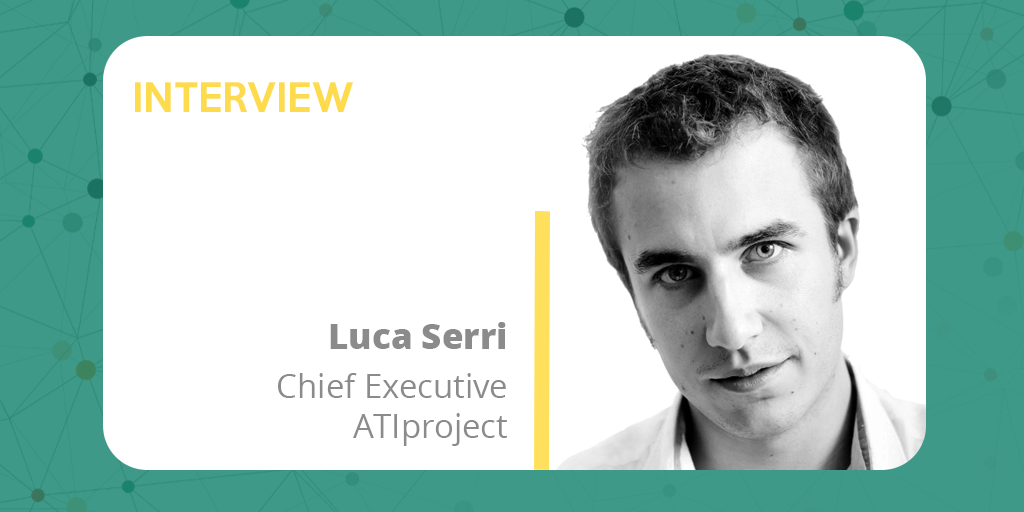
IN A FEW WORDS, WHO ARE YOU AND WHAT ARE YOUR PROFESSIONAL PURSUITS?
I’m the Co-Founder and Chief Executive of the ATIproject studio based in Milano, Italy. Since 2011, ATIproject has been working in the field of architecture and engineering, with passion and innovation, promoting environmentally friendly and zero-impact design and construction. Today ATIproject is an international reality operating in multiple countries with an innovative and constantly evolving approach. The driving force behind this success lies in a team of cohesive and motivated, competent and visionary Architects and Engineers.
Multidisciplinarity, the strength of integrated design, is at the core of the creative process which has led ATIproject to stand out and emerge. Through the BIM platform, we guarantee lean and effective project management with full interdisciplinary integration, obtaining significant saving of resources, for the environment and our customers. Today we can imagine a sustainable future, in which the economic challenge never leaves the ecological one behind, and our presence guarantees a healthier world to our children. We strongly believe in this future and are determined to shape it.
WHAT IS YOUR TAKE ON BIM IN RENOVATION OF RESIDENTIAL BUILDINGS?
Renovation of the existing buildings is an essential step to achieving the goals defined at European level. BIM methodology is mostly developed for and applied to new construction projects and its potential for renovations and retrofits is still less explored. The main added value of BIM is that it can streamline the designers’ decision-making by improving the integration between different design areas, saving time and money during the various project stages. BIM can contribute to making refurbishment and renovation projects more efficient, intelligent and sustainable even more so considering our society’s need for improving the quality and overall performance of the built environment, especially with regards to energy consumption. BIM models enable to understand and predict how the project will be executed and how it will behave encompassing aspects such as thermal, visual, and acoustic comfort.
WHAT IS YOUR PERCEPTION OF BIM4REN?
We started this incredible journey together with the other BIM4REN partners. Working in renovation projects is always a little riskier than starting a building design from scratch. To reduce the possibility of setbacks, the first step is to invest in research and digital representation of the project environment or building. From this point of view, BIM4REN aims to be an unprecedented tool. This indeed required the collection of a large amount of building data, which of course given the age of the buildings are very likely to be spread on lots of different paper documents, thus requiring a huge amount of work. The goal of BIM4REN is to speed up this process, save time and to quickly obtain a well-built model which finally represents the building to be renovated. In addition to this, a database is established to be used and updated throughout the building’s life cycle, for the renovation project and the future Operations and Maintenance activities.
HOW DOES THE FUTURE OF CONSTRUCTION LOOK LIKE ACCORDING TO YOU?
It’s an exciting time for the construction industry, and new methods for creating buildings are going to be needed to keep up with the demand. New technologies are continuing to evolve and innovate the way construction is managed in many parts of the world.
The first challenges we face now are: “How do we get more skilled workers involved in the construction industry? Are building professionals prepared for the modernisation of the building stock in the light of technological developments and smart solutions?”
The future of construction will depend on data. Data is the information at the heart of BIM and shall be structured in order to guarantee the possibility of extracting and analysing it in different ways to provide knowledge, which includes process optimization and potential savings. The whole industry is discussing how we will allow machines and algorithms to make sense of the large amounts of data that the construction industry produces; this will be our future goal. Data-driven innovation will provide the infrastructure needed to store, manage and validate large-scale datasets. Essentially, data-driven entrepreneurs provide products which help make sense and create value of BIG data. In this way we will enrich the tools to face all the challenges that this sector is issuing, reaching the objectives set by the European community over the next 30 years.